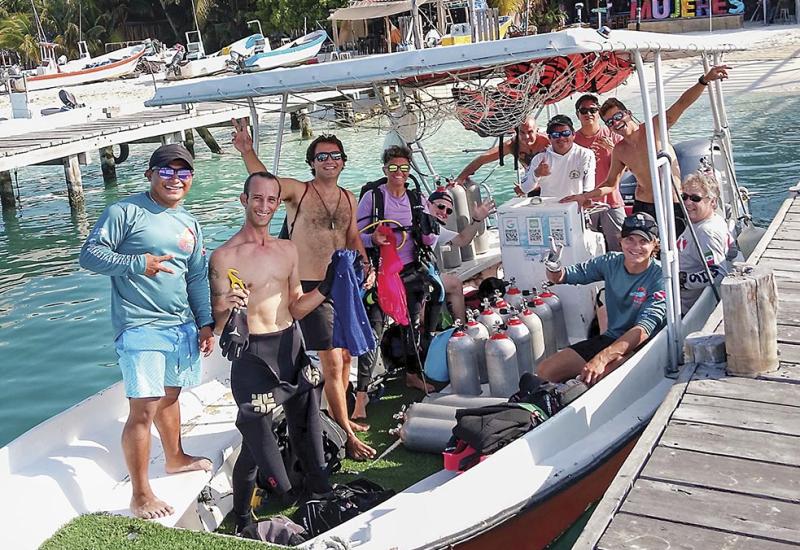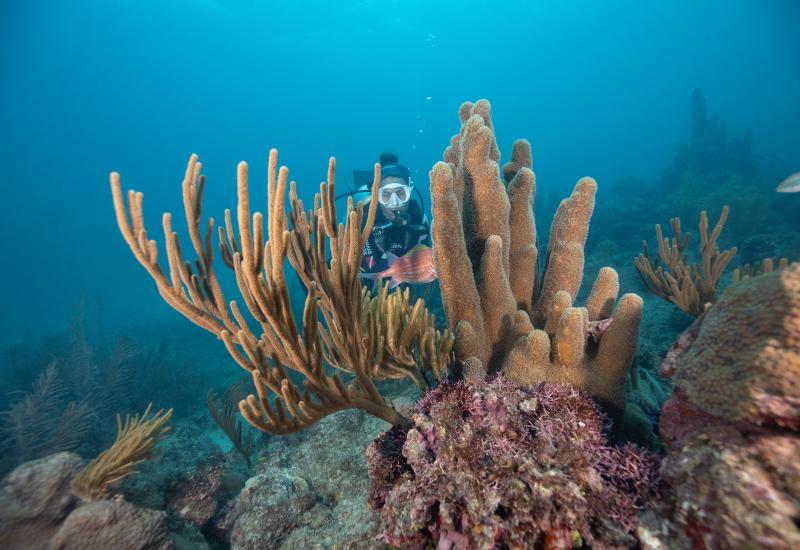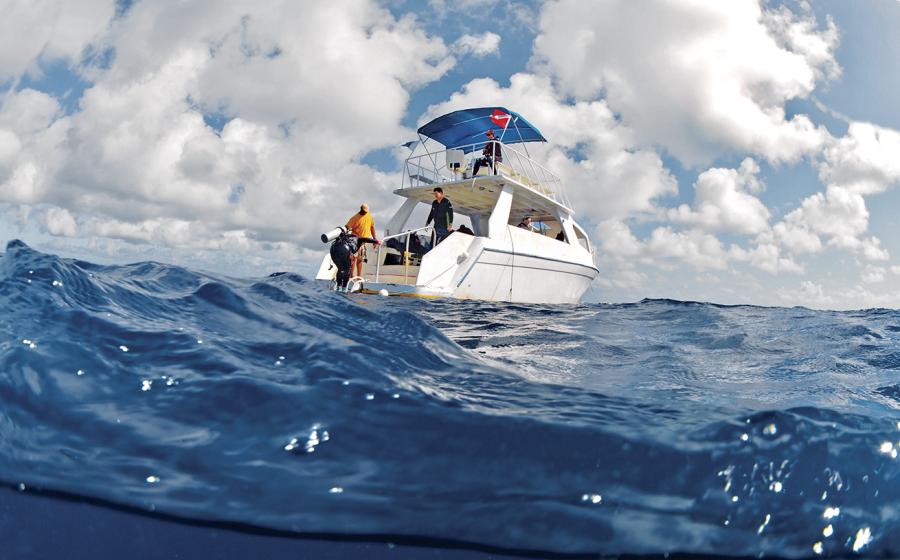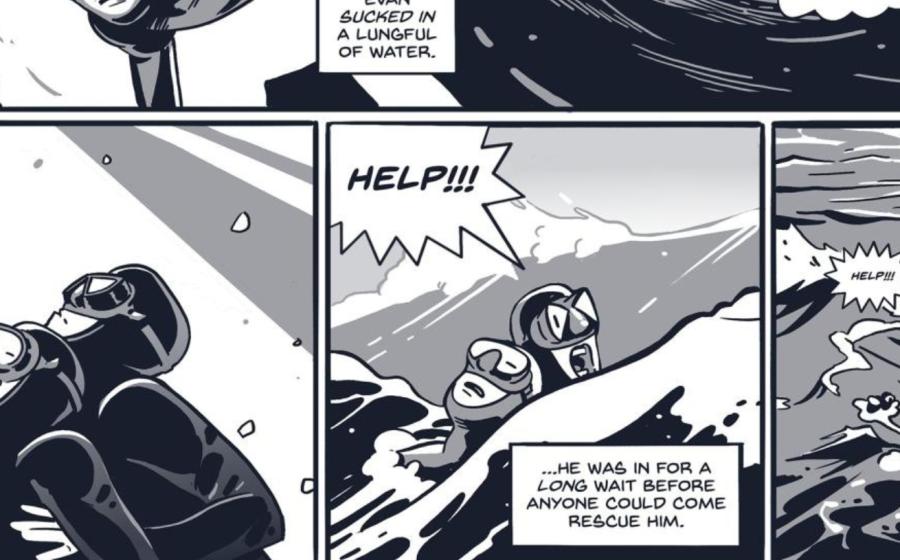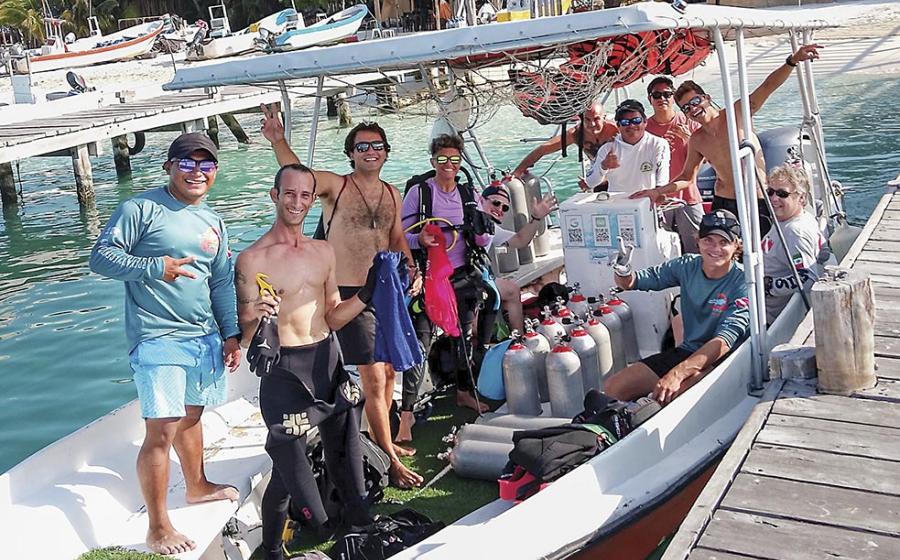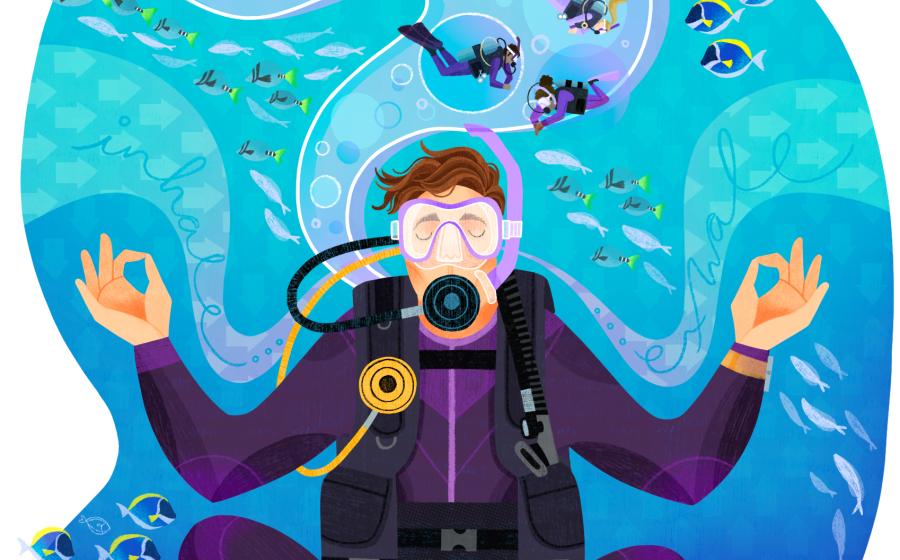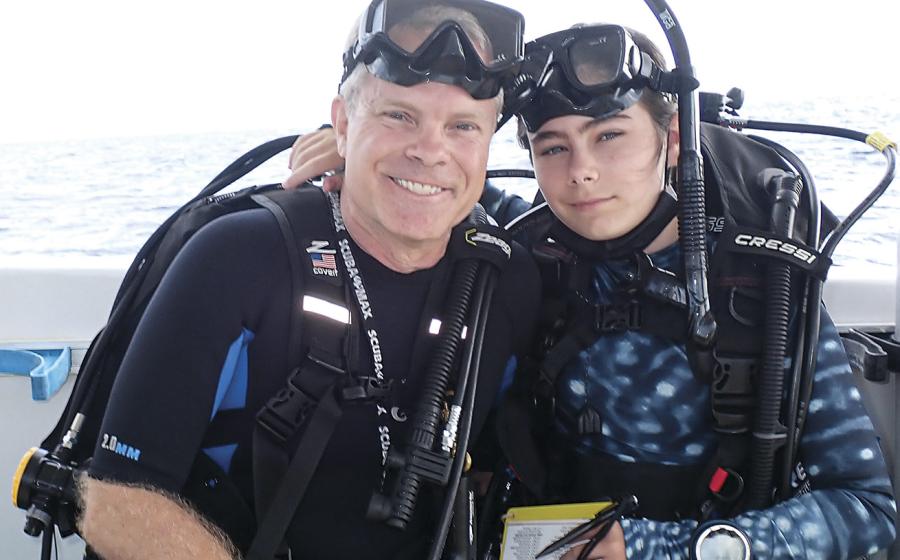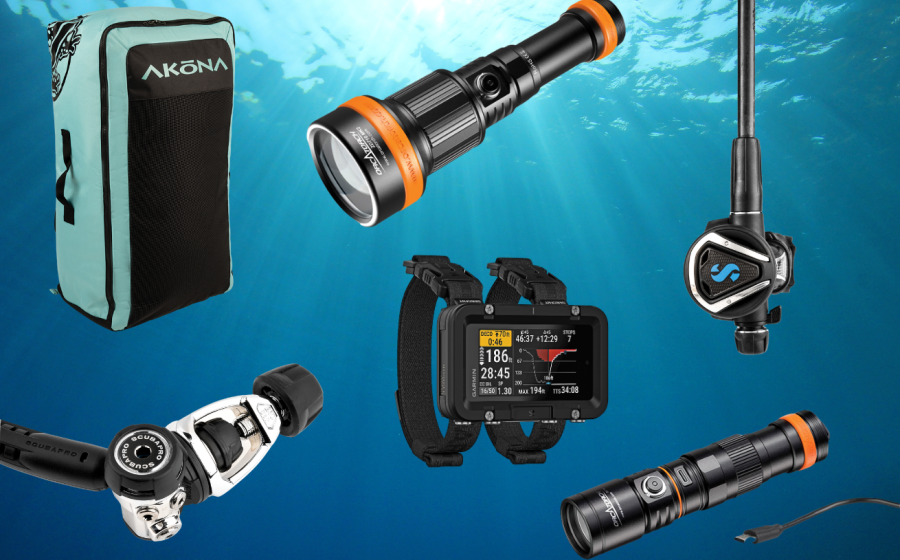Learning to Dive in the Bahamas
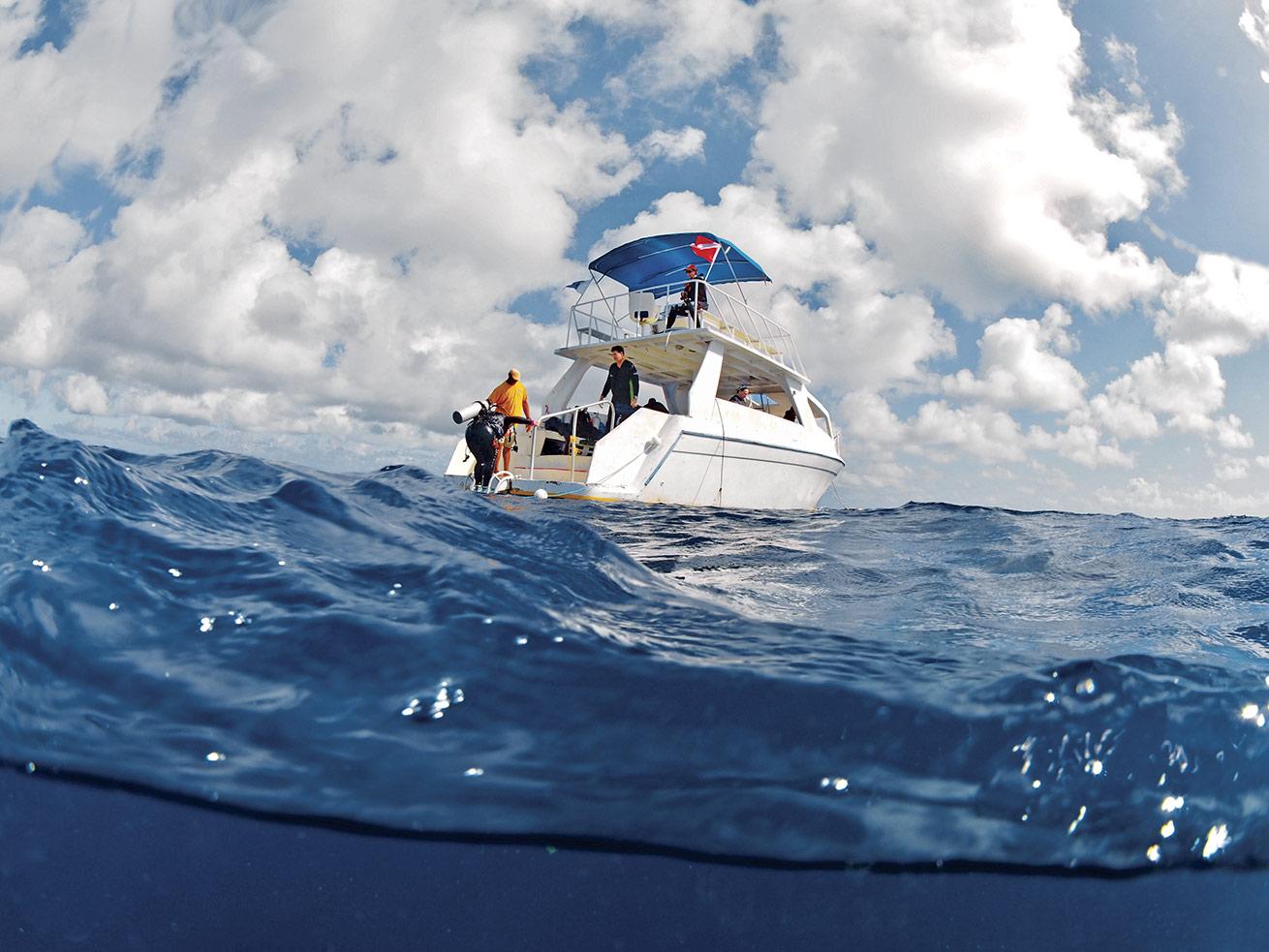
Courtesy Riding Rock ResortGuanahani Divers operates two dive boats from a marina that is a short walk from the resort.
I am not a morning person. I’m painfully reminded of this as my phone screams for me to wake up. It’s 6 a.m., and I’ve given myself just enough time to eat, dress and drive to the Lake Mary, Florida, YMCA, where I’ll spend the next two days training for my PADI Open Water Diver certification. But that won’t happen if I spend all morning luxuriating in bed, so I throw back my plush comforter and invite my hotel room’s frigid air to jolt my brain into alertness.
Less than an hour later, I pull up next to the outdoor pool. I’m early, so I take a moment to reflect. I should have tackled certification months ago, but something always came up. (Usually my procrastination.) Then, I was offered an opportunity to join Undersea Expeditions—a dive group that organizes vacations for queer travelers—on a weeklong shark-centric dive trip to the Bahamas. A call to Seminole Scuba, a local PADI Five Star IDC, organized everything for me in record time.
An impossible-to-miss orange Jeep pulls up, snapping me back to the present. Kerry Vanhorn, a PADI IDC Staff Instructor, is here. He steps out of his car, and I’m reminded of Anthony Bourdain, in appearance and an unassuming bravado that exudes confidence.
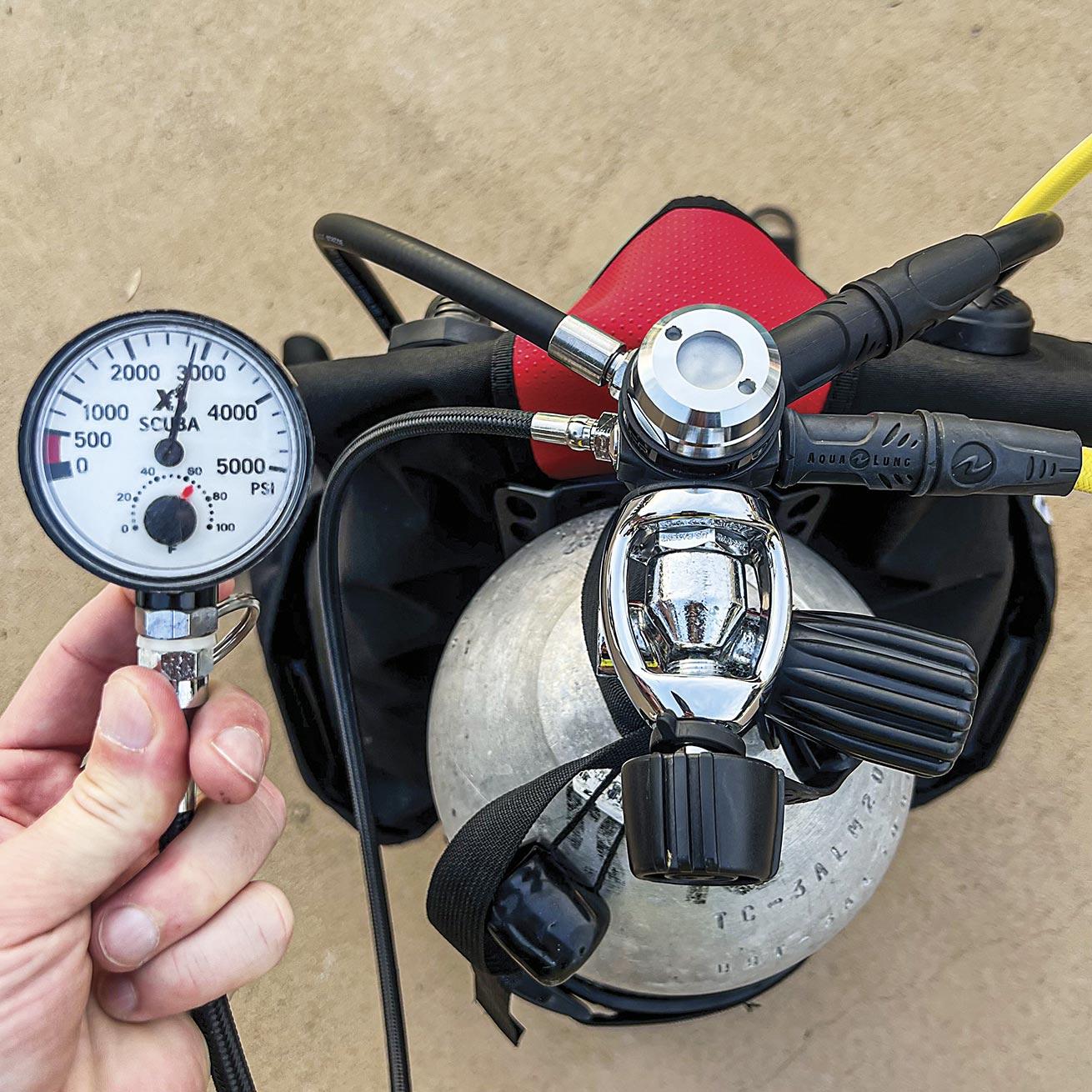
Joshua PramisPredive air pressure check.
“We’ll spend two days in the pool but tentatively plan for a third,” Kerry explains as we take care of some paperwork. That’s the beauty of one-on-one training: It costs more, but there’s a flexibility you don’t always find with a bigger group. After I master the skills in the pool to Kerry’s (and PADI’s) satisfaction, we’ll trek an hour or so south to Lake Denton for my first two open-water dives—but that’s where we’ll stop. I plan to wrap up certification in the Bahamas.
Splitting up the certification process might not make sense for everyone, but I figure by waiting to finish, I’ll have a full week of back-to-back dives to refine my skills, continuing the momentum in paradise. And by getting the bulk of the coursework done back home, I won’t have to forfeit precious days of my trip stuck in a pool practicing the basics.
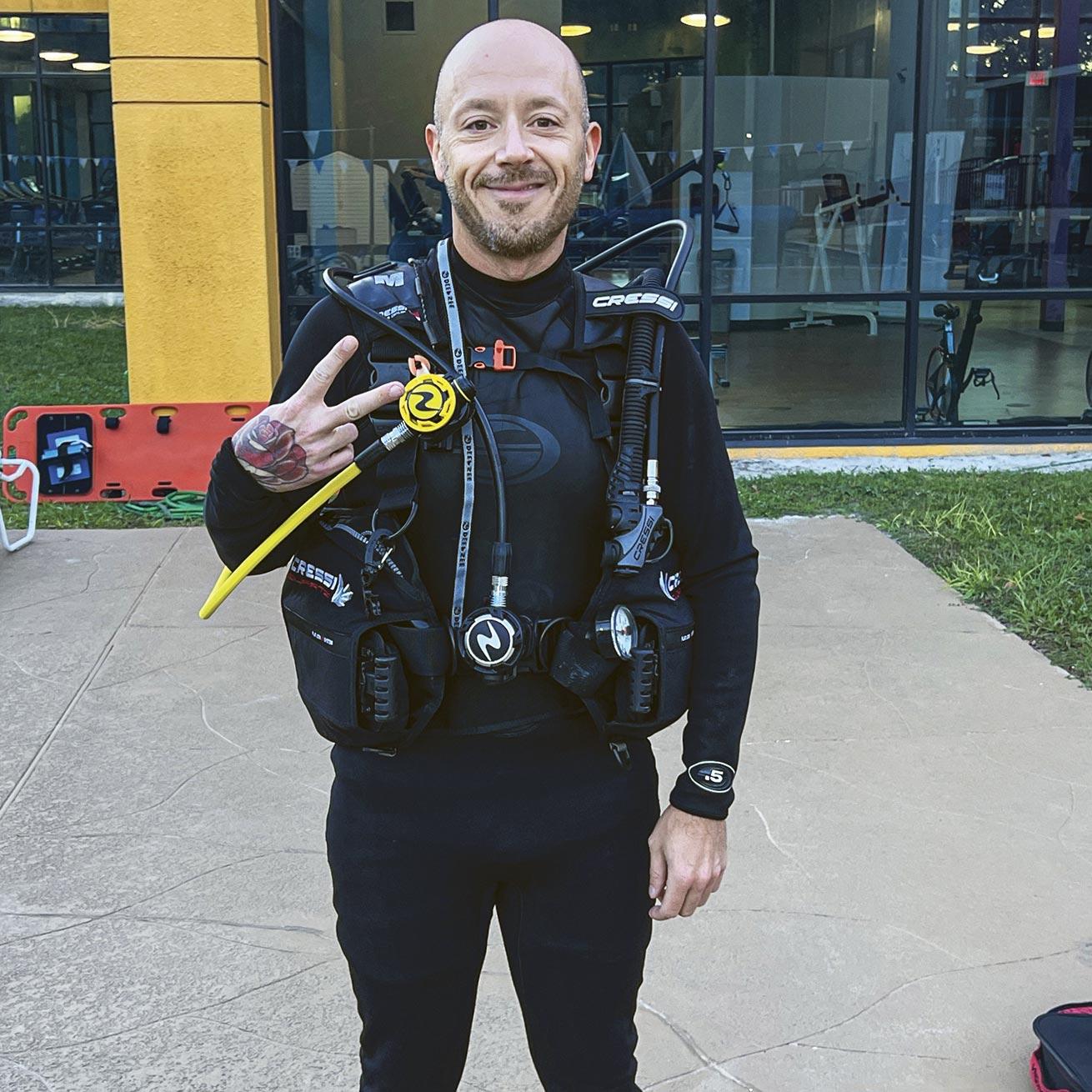
Joshua PramisThe author all suited up for his first-ever dive.
We suit up and get to work. This is the part I’ve been anxiously waiting for. Regulator in mouth, I deflate my BCD and slowly slip below the surface. Inhale. There it is: my first underwater breath. It’s strange and feels unnatural. And it’s so. Freaking. Cool.
Three days later, my pool dives and two open-water dives at nearby Lake Denton checked off, Kerry and I part ways. He’s helped me complete the first part of my training, and I’m so grateful.
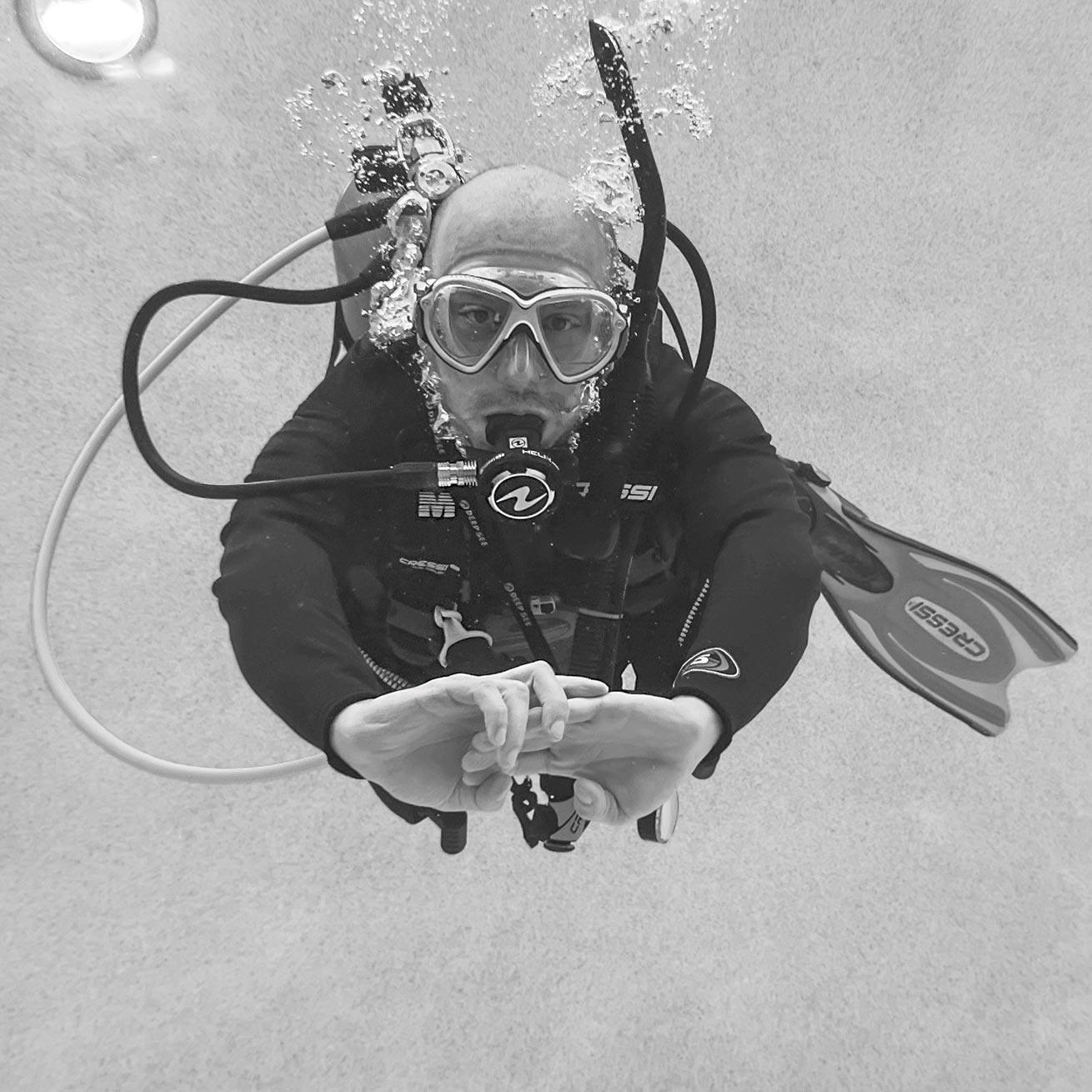
Joshua PramisNothing like that first underwater breath.
Bahamas Bound
Much as I am not a morning person, I’m not a get-to-the-airport-early person. However, today is an exception to that rule, and I’m at Miami International Airport three hours before my flight. Look, there is only one direct flight from the United States to San Salvador Island per week, and this is it—I’m taking zero chances.
Related Reading: The Best Scuba Destinations for Beginner Divers
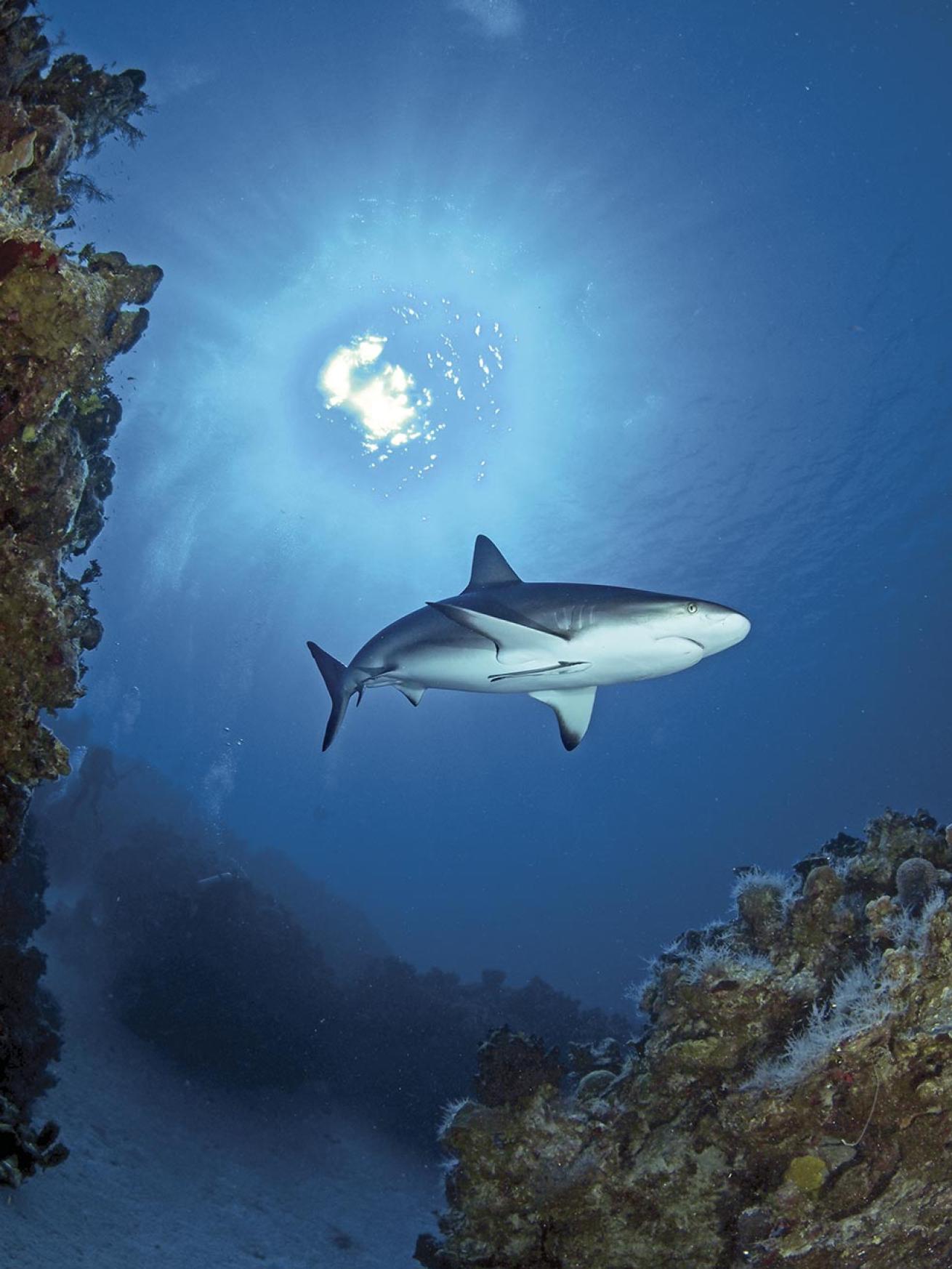
Courtesy Riding Rock ResortA Caribbean reef shark circles.
Plus, I don’t know anyone else on this trip—well, with one exception. Bryan Legare is one of the two people leading our trip on behalf of Undersea Expeditions. Bryan is a biologist who is passionate about shark conservation. He has more than 600 dives under his belt and has been diving with Undersea since 2018. We’re also old college friends who have kept in touch but not seen each other since those school days [redacted] years ago. I was just as surprised as he was when I learned the universe planned this unexpected reunion.
At his side is Josue Rigueiro, our other host. He’s newer to Undersea Expeditions, having first dived with them in 2023, but has an impressive record of nearly 300 dives. Their dynamic helps us establish a bond as this group of (mostly) strangers collects near the terminal gate. Before I know it, it’s time to board our quick one-hour flight to San Salvador, one of the Bahamas remote Out Islands.
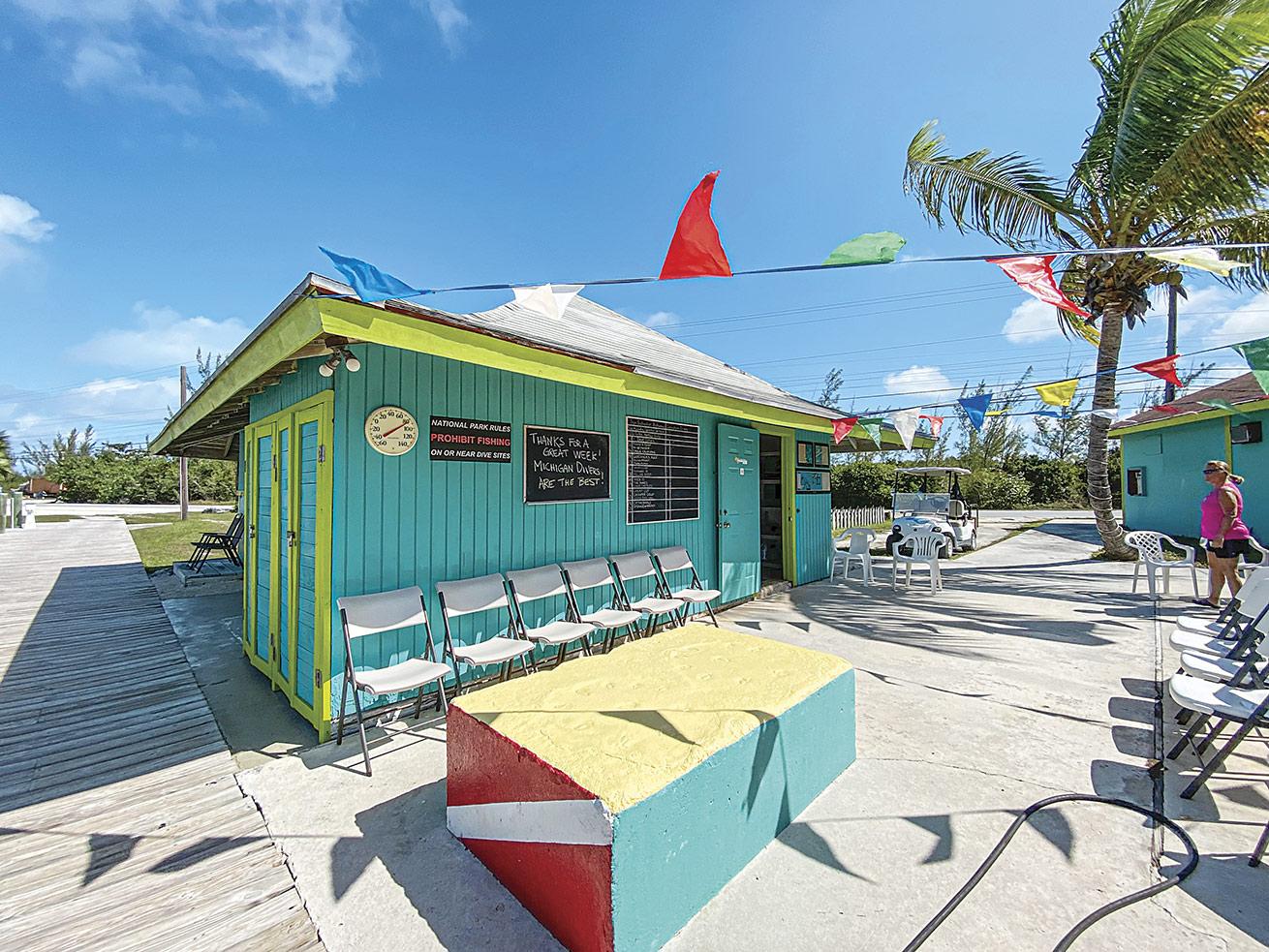
Courtesy Riding Rock ResortThe brightly painted dive shop Guanahani Divers.
I’ve been to some small airports, but San Salvador Airport takes the cake. Upon landing, we easily gather our luggage and head to a handful of shuttles waiting to take us to Riding Rock Resort & Marina, our home for the next seven nights.
The modestly sized hotel lacks many of the bells and whistles of a bigger resort, but you don’t come to San Salvador Island for bells and whistles. The main building is where we’ll have all our meals and gather at night. It’s also the only place we’re guaranteed Wi-Fi. The recently renovated guestrooms, a short walk away—our group has booked the entire resort—are spacious, simple and clean. But let’s be honest: I could be staying in the swankiest room on the planet, and I’d still only have eyes for that view, an unobstructed panorama of the most cerulean water.
We spend the rest of the day settling in, getting to know the staff and each other, and getting the download on what to expect for the upcoming week. At lunch, I begin a torrid love affair with the homemade conch chowder served almost daily. Over the course of the week, I find it never fails to reinvigorate me after a day of diving. Note to self: Ask for the recipe.
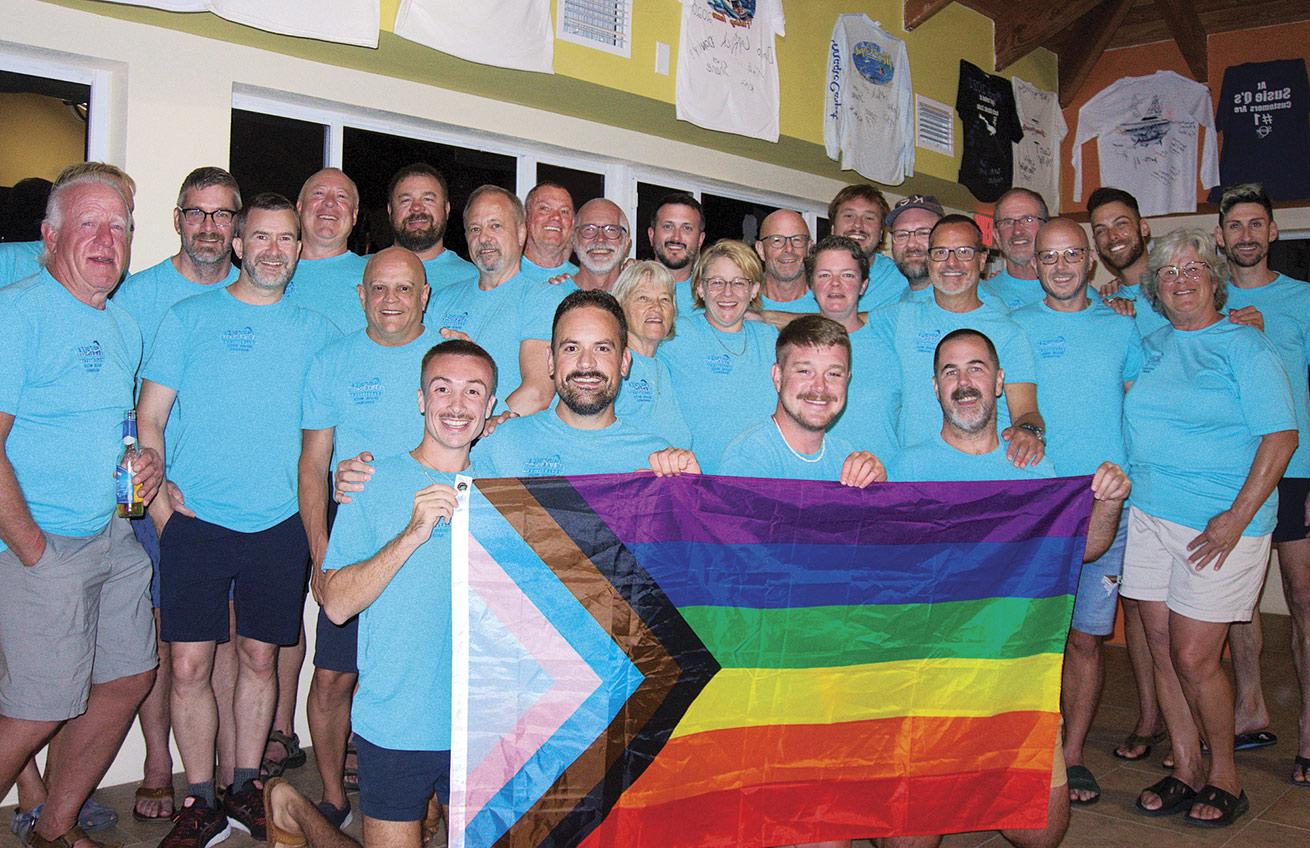
Nathan LewtonUndersea Expeditions divers gather in the resort’s lounge to celebrate and reminisce after a successful week of shark-spotting.
The Main Event
The next morning, we wrap up orientation before heading to the marina where Guanahani Divers, the dive shop owned and operated by Riding Rock, docks its boats. Our dive guides, Tyler and Betsy, have been with the resort for years. We’re getting a later-than-expected start, so we’ll only manage two dives today (they follow through with a promise to make up for it later in the week), but that’ll be enough to finish my certification.
Our group of 29 is large enough that we’re split into two groups on different boats. I’m paired up with PADI Instructor Nick Groshart, and we have a plan. Kerry covered so many of the bases, but there are more skills remaining to check off (and we’ll run through a few others for good measure) before I’m official.
I plunge into the warm Caribbean water. Moments later, Nick follows suit, and we signal an “OK” to go under. As I slowly descend, the scene in front of me is surreal. The water is astonishingly clear, and I can see everything: my fellow divers descending, coral formations all around and so many swimming creatures. I feel moisture in my eyes and wonder if my mask has sprung a leak—really I’m just a bit overcome with emotion.
I blink away the tears as best as I can and focus. I’ve got work to do. I practice diver towing and compass navigation. I need extra guidance on the latter, and Nick is patient with me as I work through a bit of confusion—but I get there.
On the second dive, I spot my first Caribbean reef shark. There is something beautifully humbling about holding space with an animal like this. I’ll see dozens more sharks throughout the week, each encounter as magical as the first.
Later that night, we gather in the lounge area, everyone else excitedly recounting stories from the day. But I sit in a corner next to Nick, bathed in the glow of his laptop screen. We cross our fingers and hit send, hoping the Wi-Fi signal holds strong. Thankfully, it does, and now it’s official: I’m a certified diver.
To Advance or Not to Advance
There has been no shortage of encouragement from my new bubble buddies who insist that I look like I’ve been diving for years. It’s a much-needed confidence builder, so when Nick tells me he’s doing another PADI Advanced Open Water Diver certification on the trip, I consider joining. The nerves have melted away. I’m comfortable with my gear. My buoyancy is improving. I’m tempted, and with good reason: On day four, a few divers on the other boat spotted a hammerhead. I know the chances of seeing one here are rare, but they increase if you go deeper.
Ultimately, I would like a few more dives under my belt before venturing deeper. I started this process as a nervous diver, and while I’ve made strides, I think I’ll take my time. There will be other dive trips, other opportunities to get up close with apex predators—when I’m ready.
Related Reading: Prince of the Underwater Newbie Club
It’s wild to think about how far I’ve come in just a few days. Before this trip, I worried about whether I could handle being underwater for so long. Now, I can hardly keep up with my dive wish list.
As the week progresses, I fully embrace my favorite way to take in the sights: upside down, gently finning so I slowly float along cascading walls and over giant sponges. I’m told I should take the PADI Drift Diver specialty. Noted. By the fifth day, I drop 2 pounds from my weight belt, making all the difference in my buoyancy.
It’s the last day of diving, and I’m trying to revel in the sights. Over the past several days, I’ve seen Caribbean reef sharks, lemon sharks, lionfish, grouper, barracuda and more. But then, seemingly out of nowhere, a massive sea turtle, casually chomping away at a giant sponge that also serves as its throne. I wonder if it’s laughing or sneering at us, a bunch of nosy tourists. Either way, we keep a respectful distance and move along nearly 10 minutes later—though I could have happily spent the rest of my dive there.
Later, as my eyes dart in all directions, painfully aware that my time in paradise is nearing its end and desperate to soak in as much as possible, I almost miss some excitement. Thankfully, Tyler directs my attention to a huge nurse shark resting under a rocky overhang. I only get a few seconds to admire this 6- or 7-footer before it jettisons into the distant blue. I’m left in its wake, feeling lucky that I happen to be right here, right now. It’s the perfect sendoff at the end of a perfect trip.
Tips for Training on Vacation
Learn your gear.
You don’t need to be certified to learn your gear’s ins and outs. Let your trip be about practicing your skills, not learning how things function and get put together.
Stay focused on diving.
Diving can be exhausting. Experience the local scene, but don’t overwhelm yourself with a packed itinerary. Instead, spend your downtime resting so you can enjoy every dive.
Trust your training.
The first time I tried to clear my mask in the Bahamas, I flooded it. Instead of panicking, I paused, took a breath and remembered what I needed to do. Be confident in your ability to dive safely.
Need to Know
When to Go
The Bahamas’ San Salvador Island typically sees calm seas prime for shark spotting November to May.
Visibility
100 to 150 feet
Water Temps
80 degrees
Can’t-Miss Dive Sites
Just 40 feet down, Telephone Pole is a sand flat that’s home to fluttering stingrays and overly curious grouper. If there’s a chance to see hammerheads, it’ll be at Runway 10. Patience is key to spotting creatures while floating around the giant mound known as the Hump.
Contact
Riding Rock Resort
Undersea Expeditions


